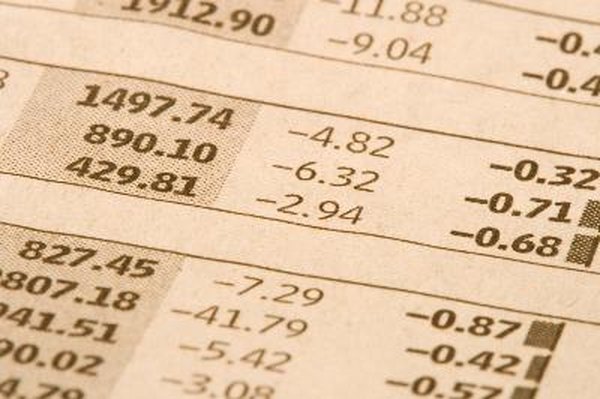How to Figure the Weighted Average of Common Stock
The weighted average of common stock outstanding helps figure earnings per share.
Stock quotes image by Chad McDermott from Fotolia.com
The number of common shares outstanding determines how many tiny pieces a company is broken into on the market. For example, if a company has 100,000 shares, each share represents ownership of 0.001 percent. Since companies can issue shares and repurchase shares, you need to know the weighted average of common stock outstanding when you're figuring the earnings per share for the year. The weighted average takes into account how long each share was outstanding during the year. For example, shares issued at the start of the year will add more to the average than shares added at the end of the year.
Create a chart that shows the beginning number of shares outstanding and each time shares were issued or repurchased. For this example, the company will start with 100,000 shares outstanding, issue 10,000 new shares on July 1, and repurchase 5,000 shares on Sept. 1.
Step 2Multiply the amount of shares outstanding by the number of months that amount was the total outstanding. In this example, there were 100,000 shares outstanding for the first six months, so multiply 6 by 100,000 to get 600,000. Next, there were 110,000 shares for the next two months, so multiply 2 by 110,000 to get 220,000. Finally, for the last four months there were 105,000 so multiply 105,000 by 4 to get 420,000.
Step 3Add the totals. In this example, add 600,000 plus 220,000 plus 420,000 to get a total of 1,240,000.
Step 4Divide the total by 12, the number of months in a year, to find the weighted average common shares outstanding. Finishing the example, divide 1,240,000 by 12 to find there were an average of 103,333 shares outstanding.
References
Writer Bio
Based in the Kansas City area, Mike specializes in personal finance and business topics. He has been writing since 2009 and has been published by "Quicken," "TurboTax," and "The Motley Fool."

